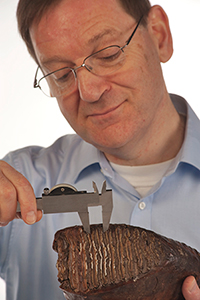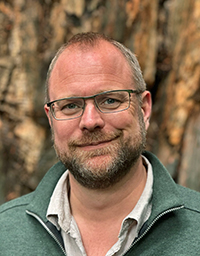 Adrian M. Lister. Natural History Museum, Cromwell Road, London SW7 5BD, UK. Corresponding author. a.lister@nhm.ac.uk
Adrian M. Lister. Natural History Museum, Cromwell Road, London SW7 5BD, UK. Corresponding author. a.lister@nhm.ac.uk
I am a researcher in palaeontology at the Natural History Museum in London. I obtained my BA and PhD in Zoology from the University of Cambridge, and from 1991 taught at University College London where I became Professor of Palaeobiology, before moving to the Natural History Museum in 2007.
My research interests are in the evolution of mammals in the Cenozoic, especially from the Quaternary ‘ice ages’ to the present. Other research interests include the dwarfing of mammals on islands, the causes of extinction of large mammals at the end of the ice age, and Darwin’s fossil collections from the Beagle voyage, which formed the basis for my book Darwin’s Fossils.
I am a zoologist at heart, so I integrate my work on fossil mammals with study of their living relatives. I am a member of the Asian Elephant Specialist Group of IUCN, and have led expeditions to study elephants in Nepal, India, Borneo and Ghana. I have authored three semi-popular books on mammoths and other ice-age fauna, and am a frequent contributor and advisor to TV and radio programmes on fossil and living mammals.
![]()
 Love Dalén. Centre for Palaeogenetics, Svante Arrhenius väg 20C, SE-106 91 Stockholm, Sweden; Department of Zoology, Stockholm University, Sweden. love.dalen@zoologi.su.se
Love Dalén. Centre for Palaeogenetics, Svante Arrhenius väg 20C, SE-106 91 Stockholm, Sweden; Department of Zoology, Stockholm University, Sweden. love.dalen@zoologi.su.se
I am a Professor of Evolutionary Genomics at Stockholm University and one of the founding members of the Swedish Centre for Palaeogenetics. My research group focuses on investigating the evolutionary history of both extinct and living species. We work broadly on a wide array of taxa, ranging in size from lemmings to mammoths, where we investigate questions related to the impact of past environmental change on evolutionary dynamics, as well as how small population size itself affects extinction risk.
I have been working on woolly mammoth genetics since 2003, and I am currently using a population genomics approach to better understand the species origin, evolution, and extinction. In 2021, I led an international consortium that sequenced the oldest genomes ever recovered, from mammoth remains that were more than one million years old.
My ongoing research is funded by the Swedish Research Council and an ERC Advanced Grant, supporting my efforts to push the boundaries of ancient DNA and evolutionary genomics.

